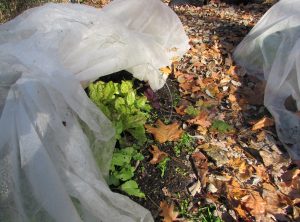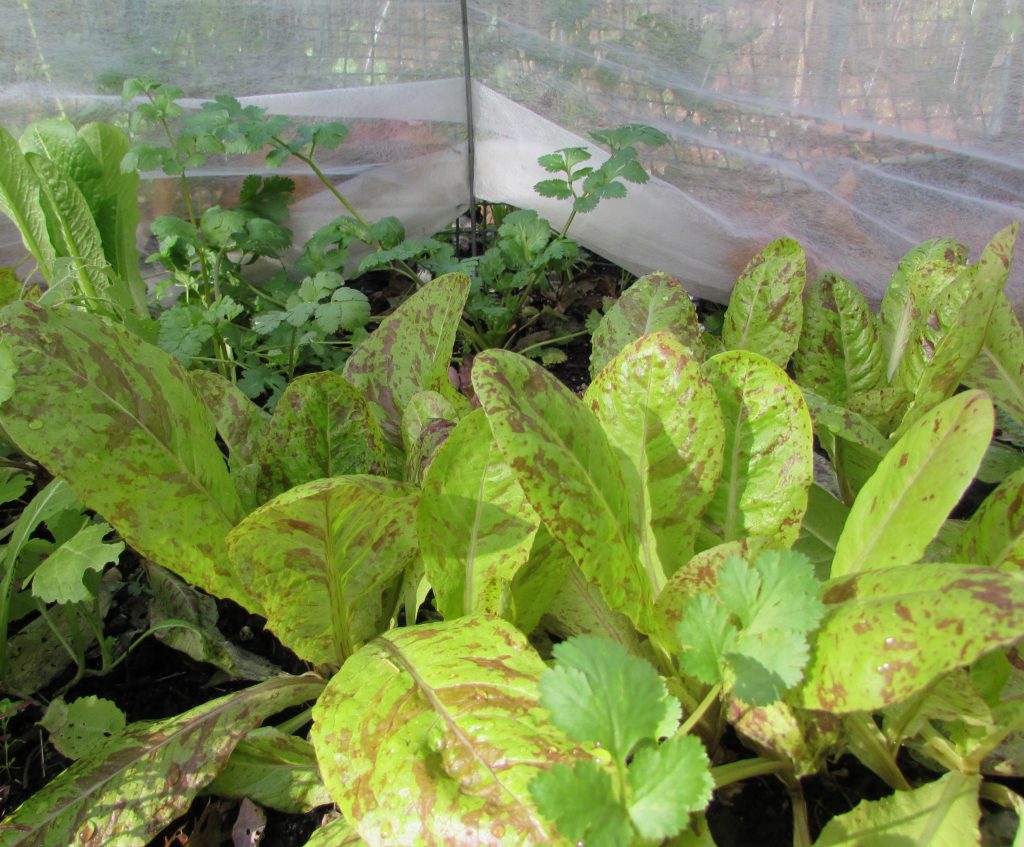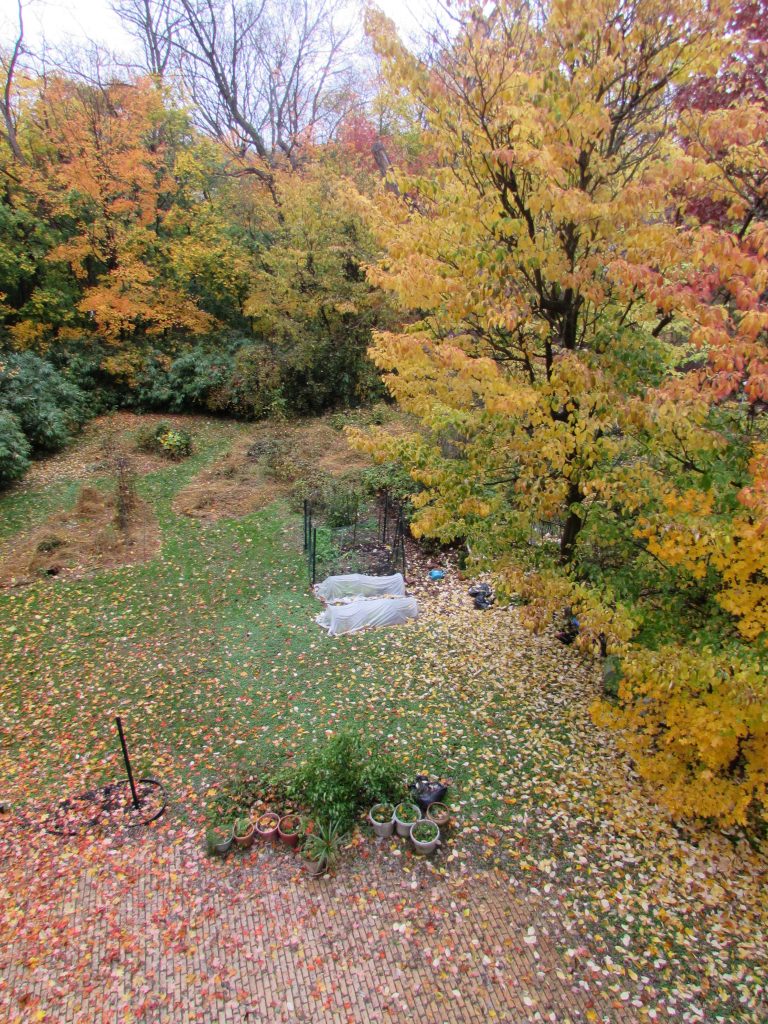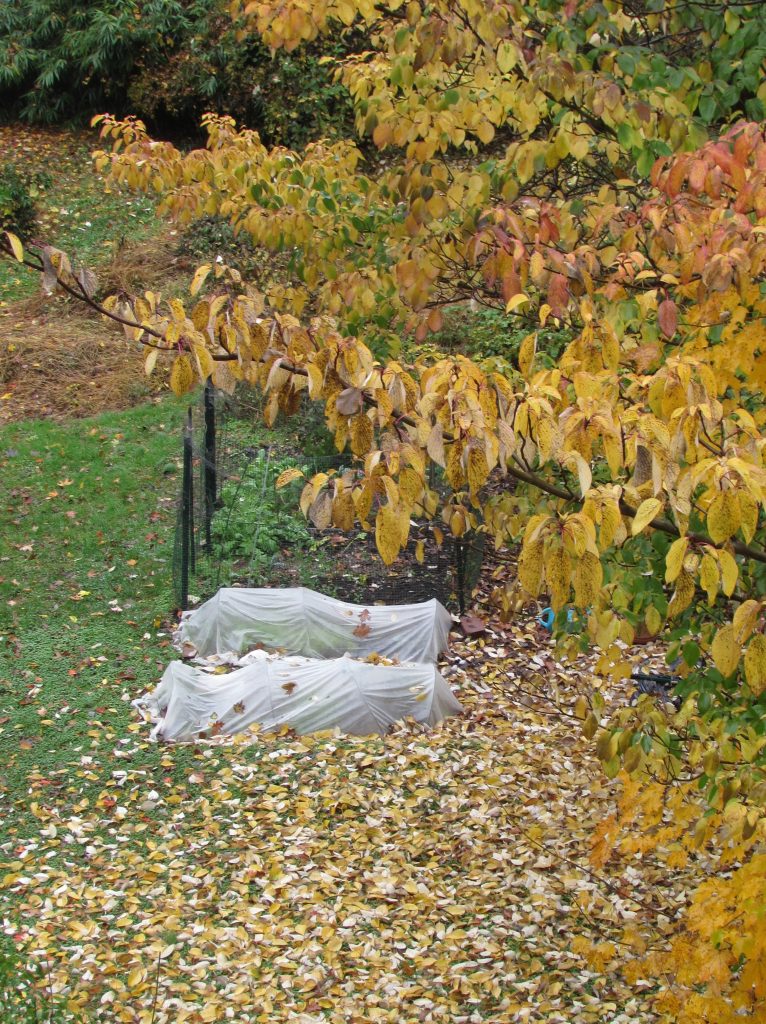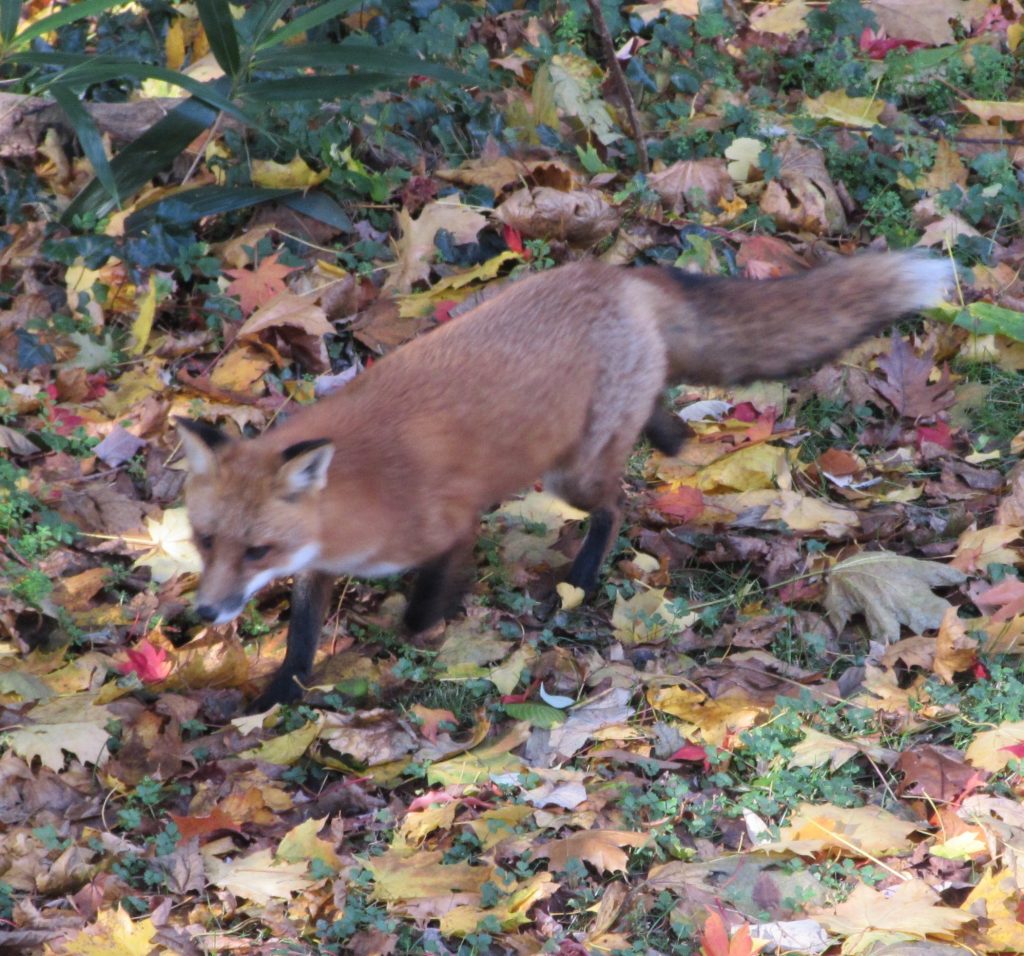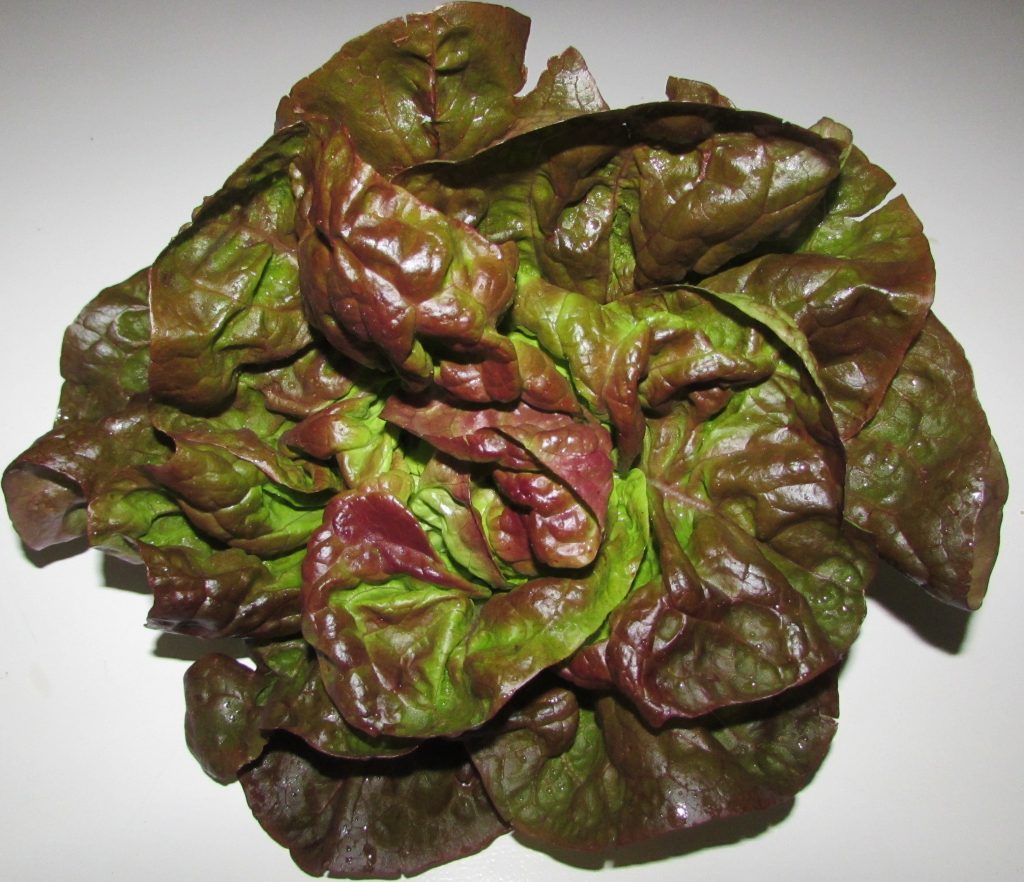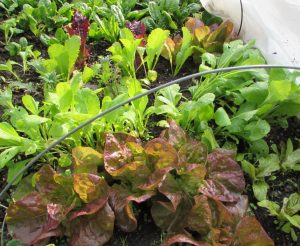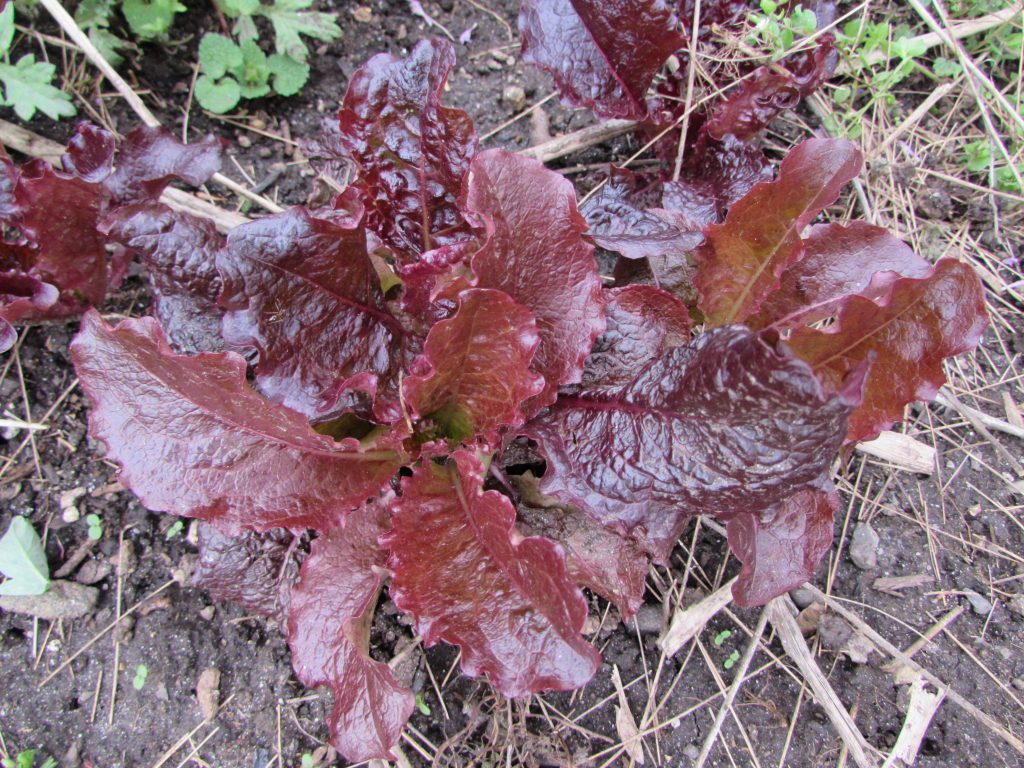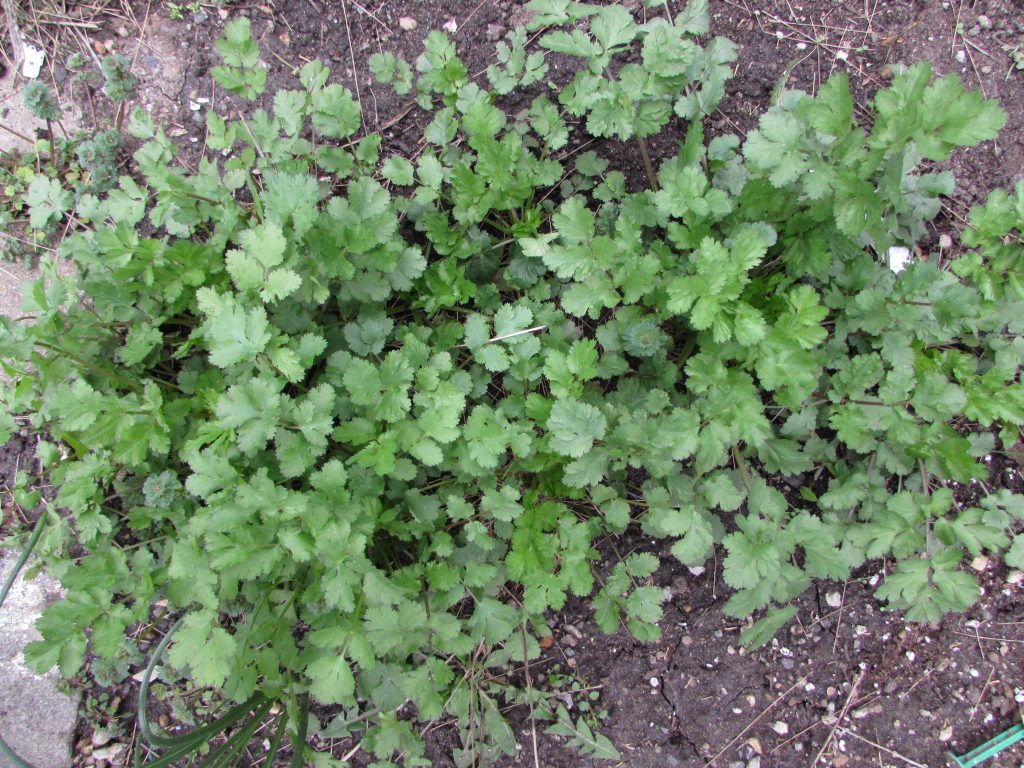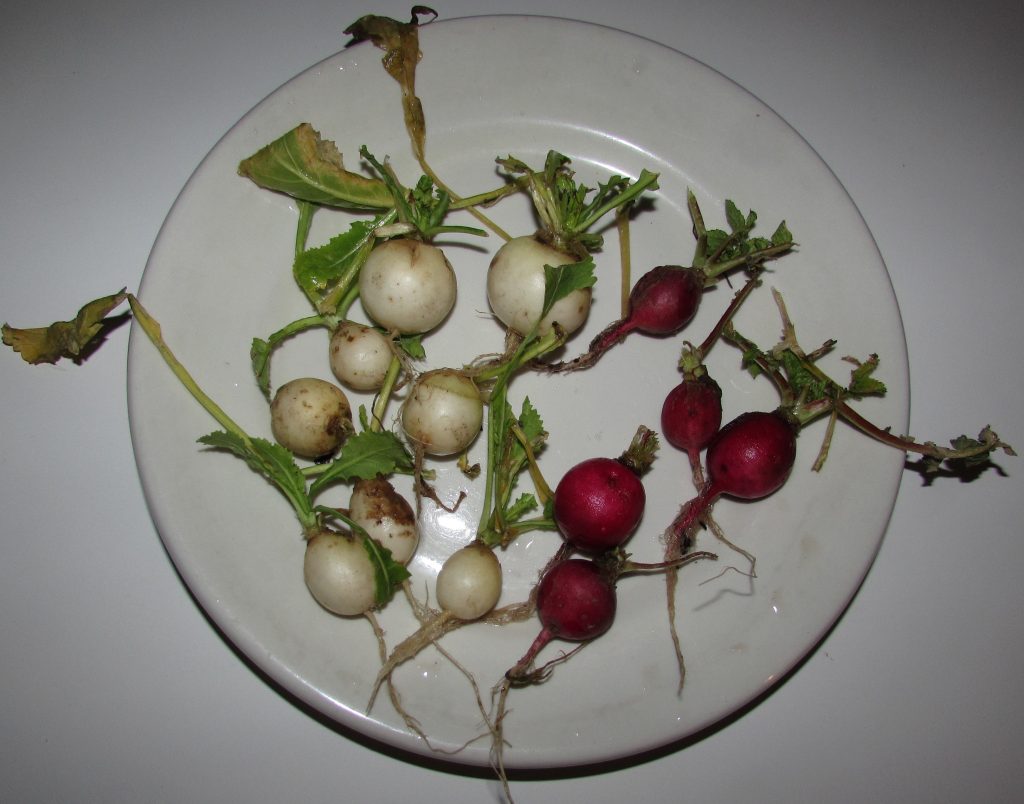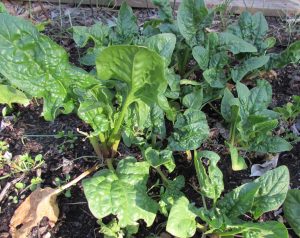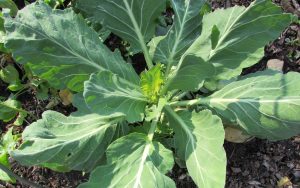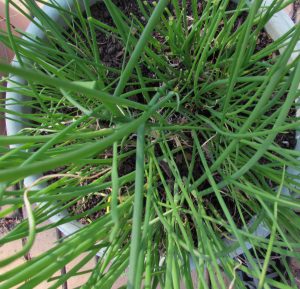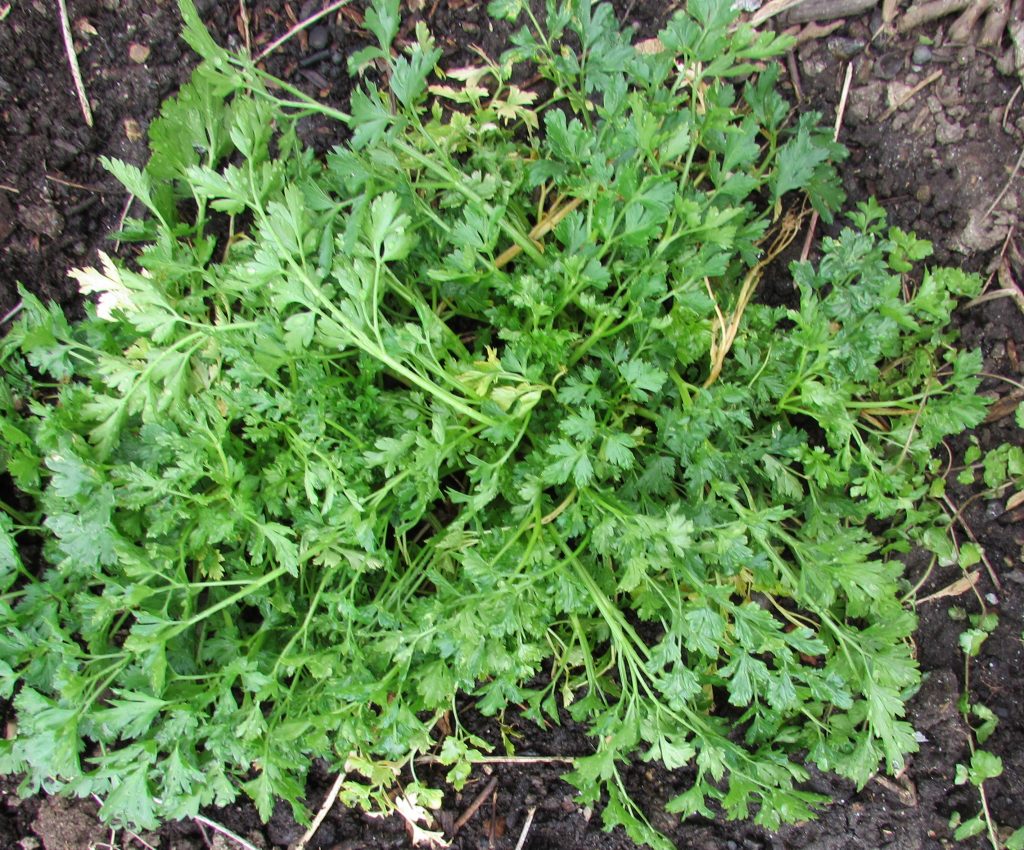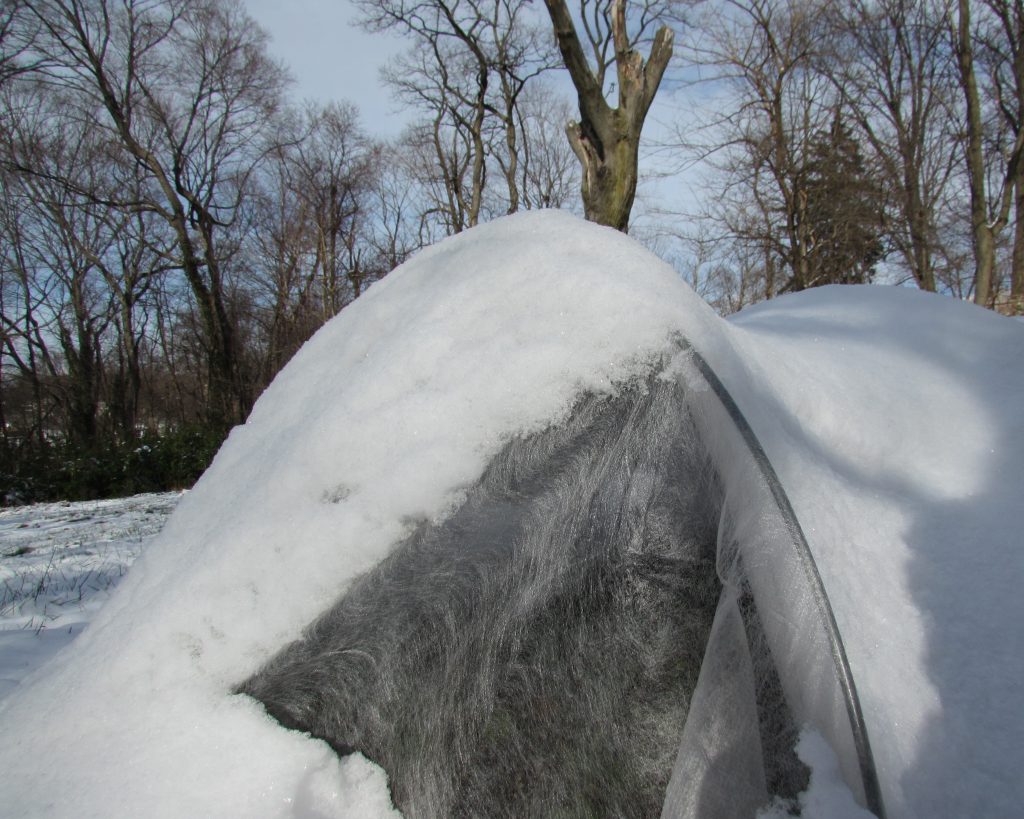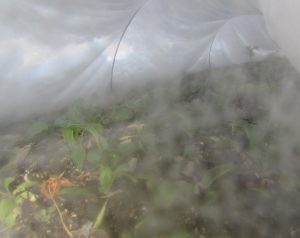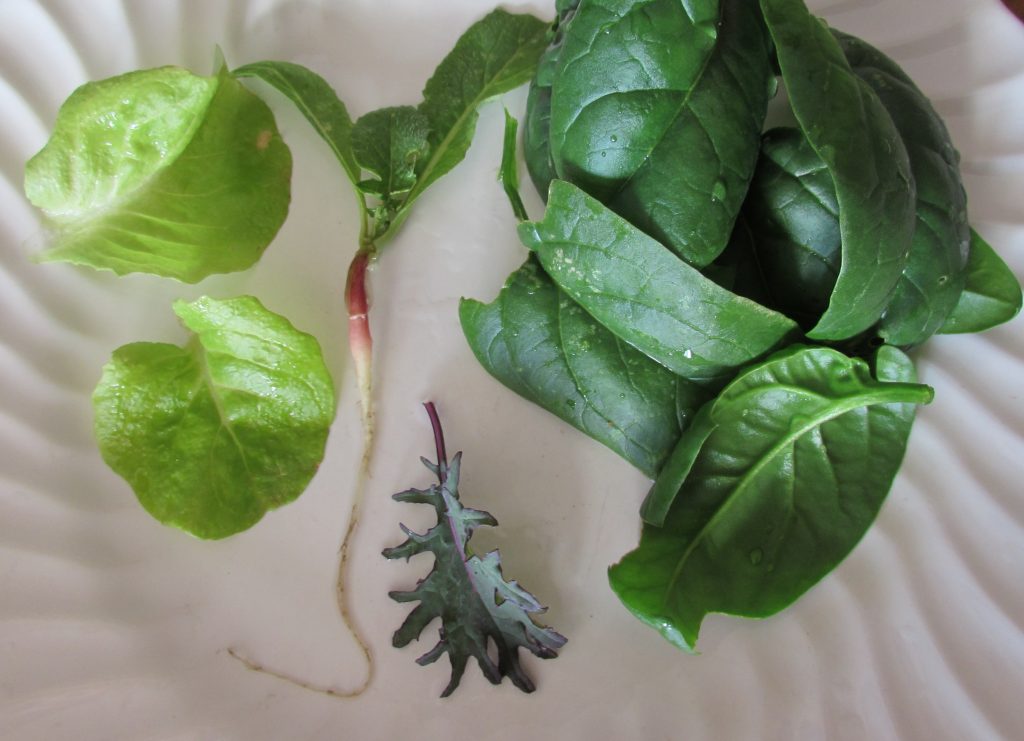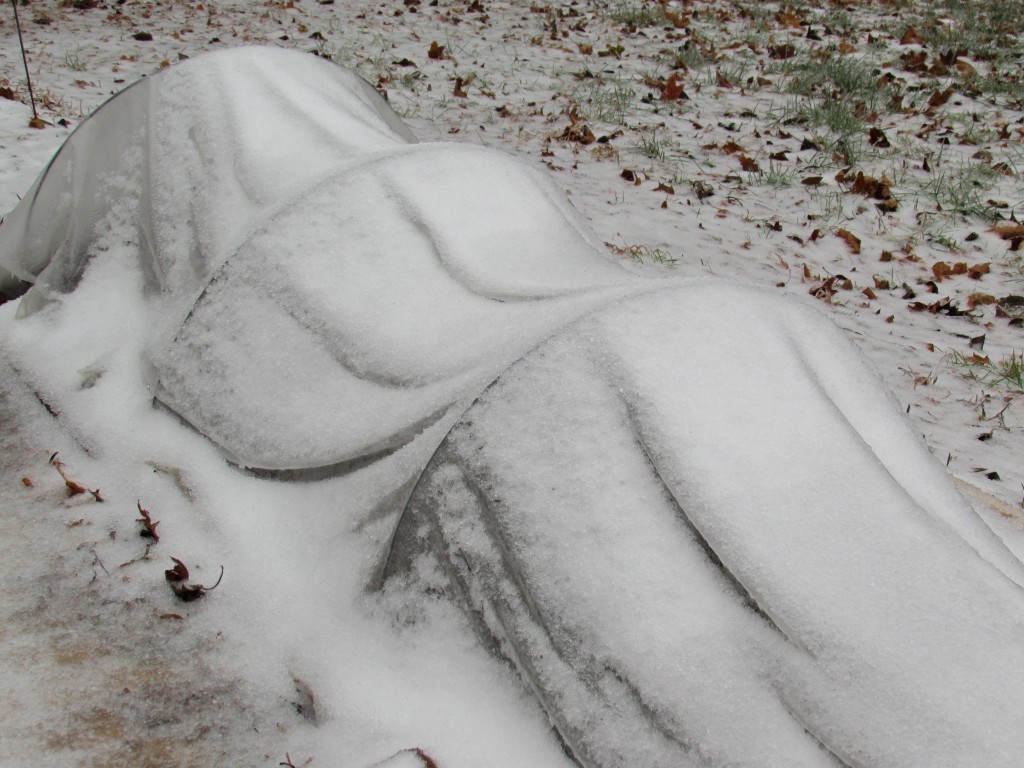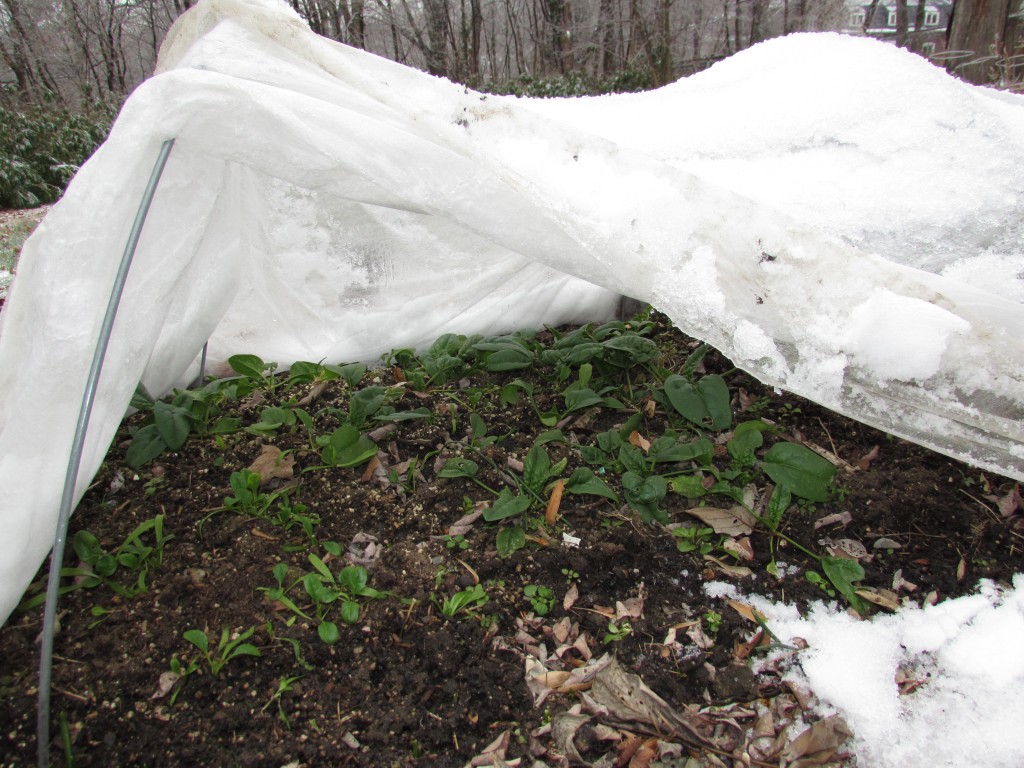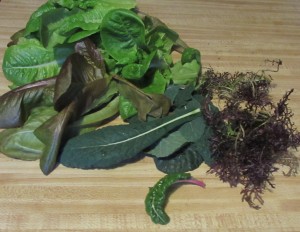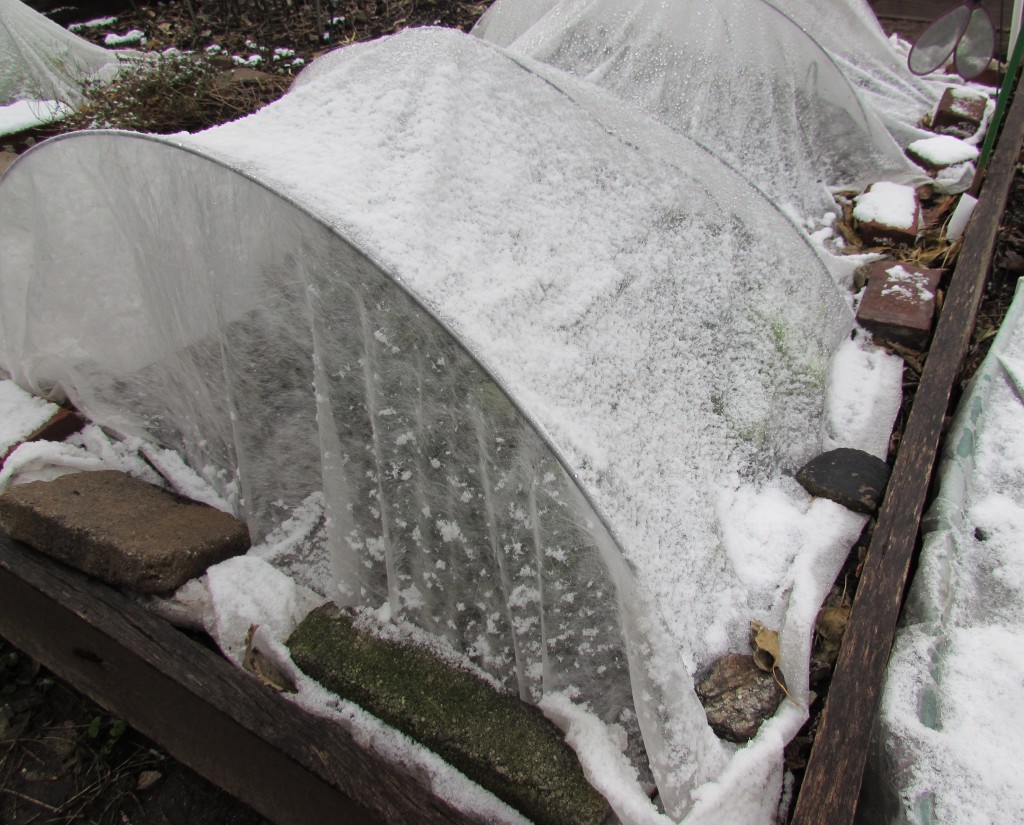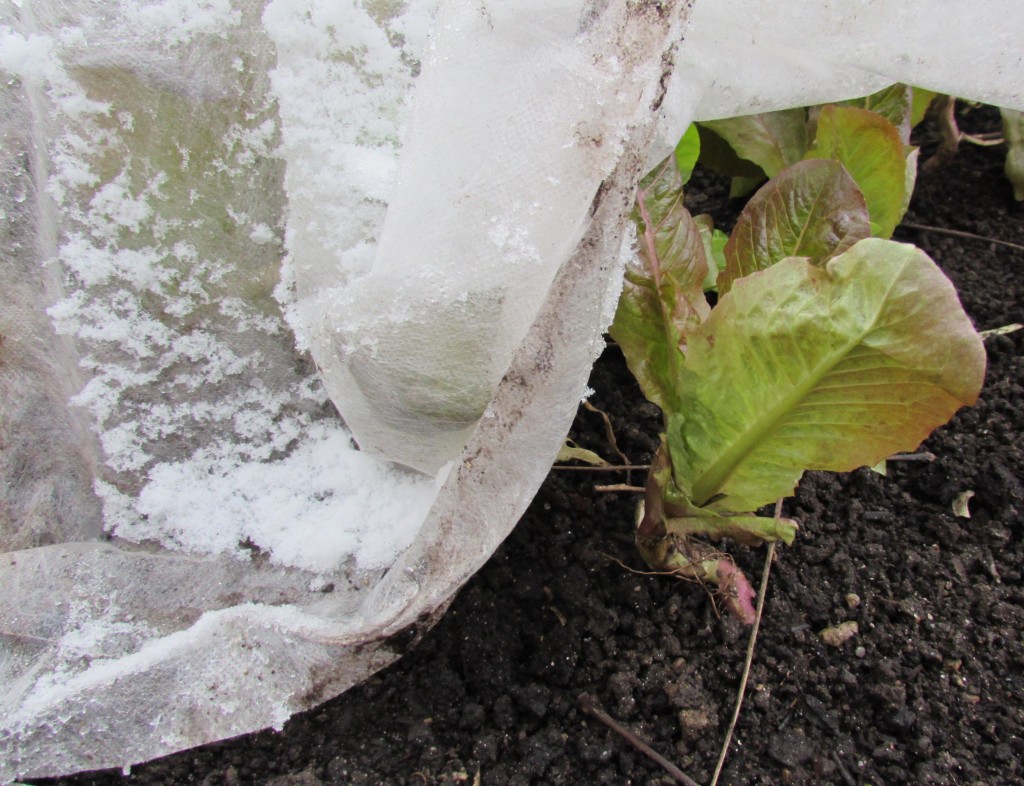
Micro Brussels Sprouts (click to enlarge photos)
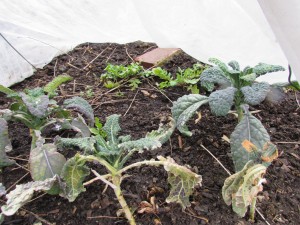
kale and arugula on April 5
The flimsy row cover that I stretched over half hoops to shelter my fall crops miraculously survived the winter. I was certain it would either be flattened by ice and snow, or ripped to shreds by the winter winds, or both. We had perhaps a dozen snow falls this past winter, most just an inch or two, but they were icy and wet. The fabric withstood it all, and was barely worse for the wear at winter’s end.
The crops underneath the row cover didn’t fare as well. A solitary spinach plant, a single frilly mustard and four kale plants survived. The Brussels sprout that I planted in September, and that never did anything in the fall, grew into a beat-up bonsai, but there were little buds in the leaf joints. I painstakingly harvested about a bite of what I am calling overwintered micro Brussels sprouts.
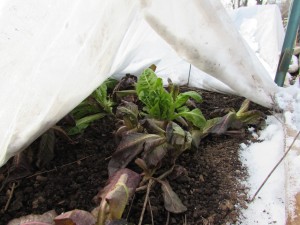
Merveille de Quatre Saisons lettuce on Jan. 9
I also planted some Merveille de Quatre Saisons lettuce seeds in September, and got a fine but small fall crop. I harvested most of the plants on Dec. 11, since I was about to leave town for nearly a month. But I left some in the ground just to see whether the cultivar would live up to its name. The plants were still alive, albeit barely. They had survived several spells of single digit temperatures. But they had rotted away by March. I’ll give the variety half a credit for yielding a nice harvest in December, even after several hard frosts, and for lasting into the new year. It’ll be Marvel of Three-and-a-Half Seasons to me from now on.
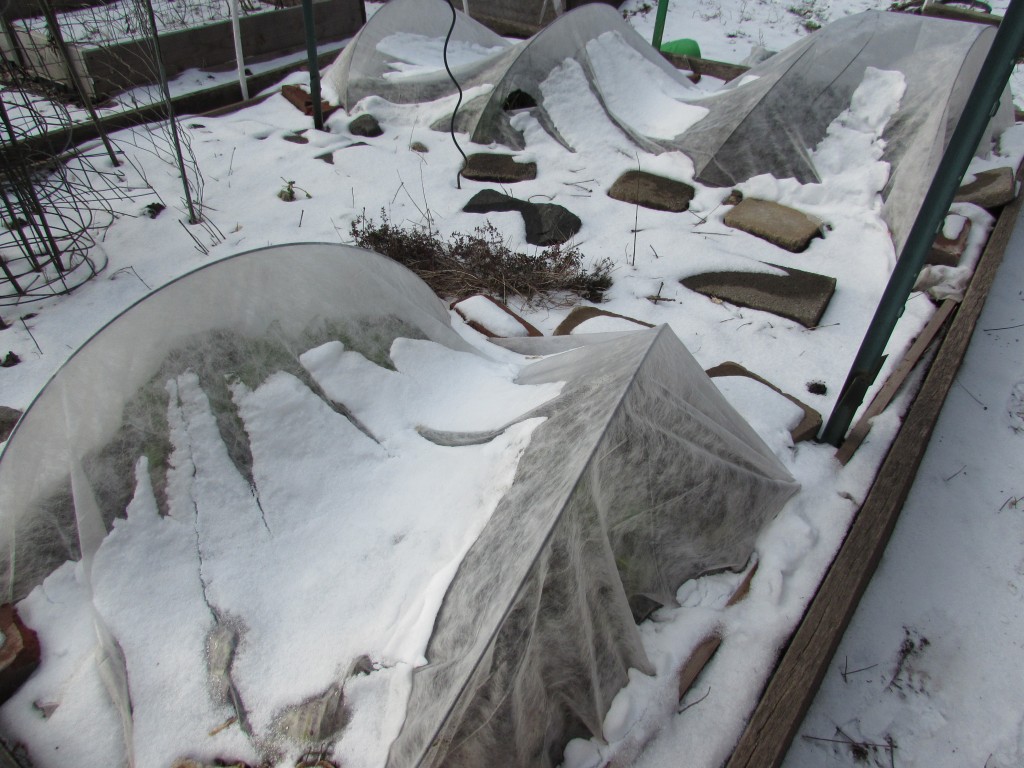
Row cover weighed down by snow but intact on Jan. 9
A few of the kale plants, from seedlings I planted in September, survived under the row cover but look quite sickly at the moment. I’ve now liberated them from the row cover and will hope for a resurgence of growth in the coming weeks.
Several arugula plants also survived. The leek seedlings I planted in the fall are very well established and look ready to plump up.
All told, it’s nothing like the bumper crop of overwintered spinach that I had last year. But the survivors are a start for the growing season of 2015 now getting underway.
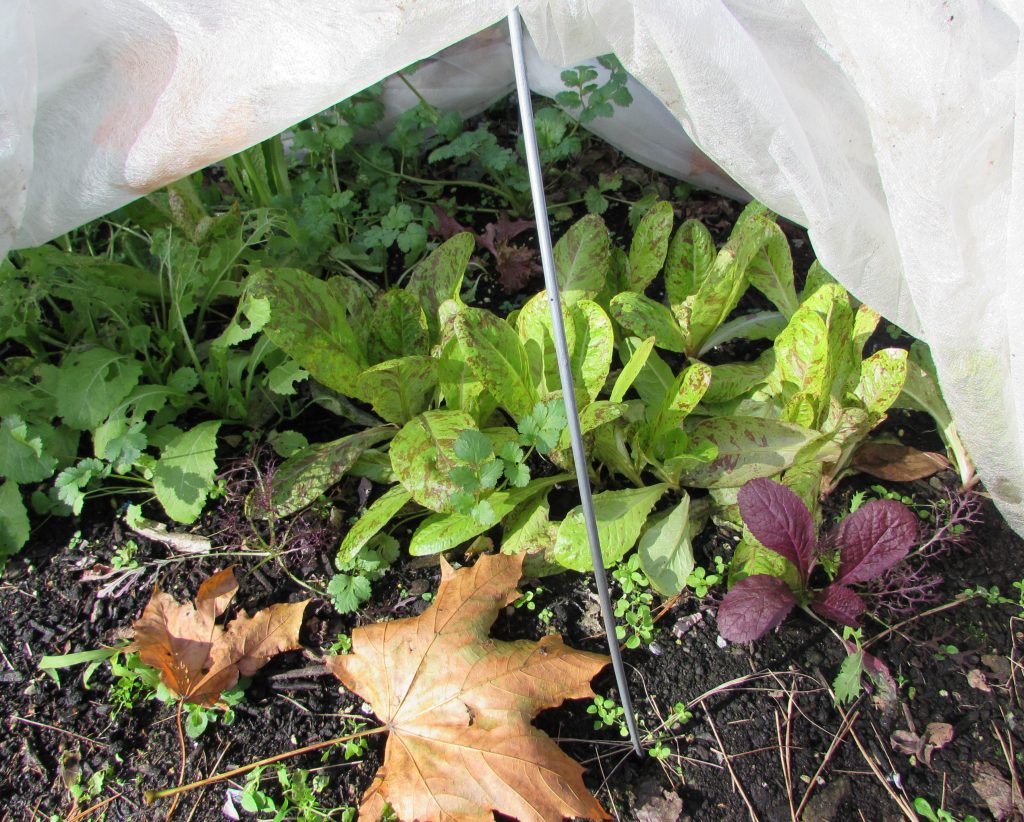 There was no science involved in my selection of crop varieties that I hope to keep growing right through the winter, under a layer or two of thin row cover stretched over hoops, aiming for some midwinter trimmings and a bounteous early spring harvest. What I’ve got is what happened to come up and survive among the varied mixture of seeds that I planted in late August. Many succumbed along the way, including all of the spinaches, to my dismay. (I’ve had avalanches of overwintered spinach in winters past.) These are the survivors to date in my garden heading into this winter:
There was no science involved in my selection of crop varieties that I hope to keep growing right through the winter, under a layer or two of thin row cover stretched over hoops, aiming for some midwinter trimmings and a bounteous early spring harvest. What I’ve got is what happened to come up and survive among the varied mixture of seeds that I planted in late August. Many succumbed along the way, including all of the spinaches, to my dismay. (I’ve had avalanches of overwintered spinach in winters past.) These are the survivors to date in my garden heading into this winter: